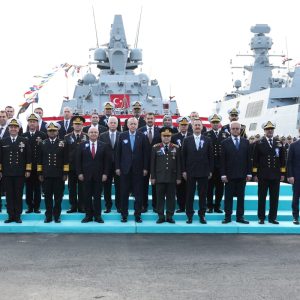Generative artificial intelligence is moving from test benches to the mission edge. As global threats evolve and budgets tighten, DoD generative AI now underpins faster decision cycles, leaner back‑office workflows, and improved digital readiness across services. This analysis distills what’s real today—automation of compliance paperwork, accelerated intelligence exploitation, and secure joint planning—and what still needs guardrails to scale responsibly.
Why this matters now
Across the Pentagon, pilot projects from Task Force Lima and follow‑on initiatives have demonstrated concrete value propositions: reduced cycle times, higher analyst throughput, and tighter integration of dispersed data. Against adversaries that iterate fast, these gains are not luxuries; they are risk‑reduction measures. In short, DoD generative AI is shifting from exploration to integration, with policy, platforms, and people aligning to operationalize outcomes rather than demos.
Key facts
• The Deputy Secretary established Task Force Lima (2023) to coordinate generative AI adoption; its work now transitions to an AI rapid capabilities construct focused on pilots and scale‑up [1–4].
• The U.S. Army reports using an enterprise LLM workspace to update 300,000 personnel descriptions in one week—work estimated at 5.7 years manually [5–6].
• DoD codified Continuous ATO (cATO) criteria and is leveraging NIST’s OSCAL for machine‑readable compliance—enabling automation of security documentation and assessments [7–11].
Automating time‑intensive tasks: from ATO to acquisition
The most immediate return from DoD generative AI is in the paper‑heavy domains that slow capability delivery. Authorizations and acquisition both rely on voluminous, evolving documentation. Language models trained on policy and control catalogs can draft and validate System Security Plans and related artifacts, converting weeks of manual effort into hours while improving consistency. Combined with the DoD CIO’s cATO evaluation criteria and NIST’s OSCAL data formats, these tools support compliance‑as‑code and faster risk adjudication without lowering the bar.
On the acquisition side, generative systems parse statements of work, FAR/DFARS clauses, and historical performance to highlight compliance gaps and standardize templates. They also accelerate market research and contract reviews by extracting entities, tracing requirements to evidence, and flagging conflicts earlier in the cycle. The outcome is not merely labor savings; it is tighter schedule control and earlier deployment of critical capabilities to the field—exactly where DoD generative AI promises compounding operational dividends.
“Automation should shorten the distance between validated need and fielded capability,” notes one program executive. “The goal is fewer paperwork bottlenecks and more time testing with the warfighter.”
For internal continuity with our coverage, see our related explainer on AI and the exposed OT surface in defence.
Transforming ISR exploitation: audio, video, and multilingual signals
ISR analysts are saturated with full‑motion video, comms intercepts, and sensor fusion feeds. Here, DoD generative AI augments the pipeline from ingest to insight. Multimodal models can simultaneously transcribe, translate, diarize speakers, and classify acoustic signatures (e.g., weapon cycling, automatic fire). On imagery, AI accelerates object detection and change‑detection, helping analysts focus on intent, anomaly patterns, and strategic context instead of first‑pass triage.
This is not a replacement for human judgment; it is a throughput multiplier. In near real time, teams can surface culturally significant phrases, mission‑critical terminology across dozens of languages, and cross‑cue sensors faster than a human‑only workflow. The mission effect is clear: fewer missed cues under pressure and faster, more confident decisions at the edge.
Secure planning and intelligence synthesis at joint scale
Perhaps the most strategically consequential role for DoD generative AI lies in secure planning and joint intelligence synthesis. With access to approved data fabrics such as Advana and the Maven ecosystem, models can fuse satellite imagery, drone video, and SIGINT text into candidate courses of action—complete with cited evidence, confidence bands, and red‑team prompts to stress assumptions. In contested environments, tactical teams report reduced time from observation to action, with recommendations surfaced in minutes rather than hours.
Two points temper the enthusiasm. First, scaling pilots into enterprise‑reliable services requires robust governance for provenance, access controls, and safe model behaviors under adversarial conditions. Second, mission users need literate interfaces that expose uncertainty and traceability, not black‑box answers. The Pentagon’s generative AI initiatives have learned these lessons, shifting investments from one‑off experiments to platformized capabilities backed by doctrine, training, and continuous evaluation.
What still needs work
DoD generative AI is not a magic wand. Three friction points stand out:
- Data discipline. Many workflows still rely on brittle, siloed datasets. Without persistent data engineering and labeling pipelines, model quality will plateau.
- Assurance and test. AI‑specific T\&E must be embedded in the DevSecOps pipeline, including red‑teaming and model‑ops telemetry aligned to mission risk.
- Human‑machine teaming. Training curricula and UX choices should emphasize explanations, counter‑arguments, and intervention points so operators can override with confidence.
Outlook: from pilots to production
With the stand‑up of a rapid capabilities construct, DoD generative AI is on a path from coordinated pilots to production use cases in acquisition, cyber, and operations. The Army’s at‑scale records update shows what is possible when model access, governance, and mission ownership align. The next 12 months will test whether those wins can be repeated across Components while maintaining responsible‑AI standards and budget discipline.
Bottom line
The United States does not need the flashiest demo; it needs repeatable, auditable, and maintainable AI‑enabled workflows that move the needle on force readiness. Done right, DoD generative AI can deliver exactly that—faster ATOs, sharper ISR exploitation, and joint planning that compresses the OODA loop without compromising trust.
References
- Deputy Secretary of Defense memo establishing Task Force Lima (Aug. 10, 2023)
- Task Force Lima Executive Summary (Dec. 11, 2024)
- DoD release: AI Rapid Capabilities Cell launch and resourcing (Dec. 11, 2024)
- Breaking Defense: Pentagon launches new generative AI ‘cell’ (Dec. 11, 2024)
- Army.mil: Enterprise LLM Workspace and 300,000 personnel updates (May 15, 2025)
- MeriTalk: Army rolls out AI workspace; 300,000 description updates (May 19, 2025)
- DoD CIO: Continuous ATO Evaluation Criteria (May 29, 2024)
- NIST OSCAL: Open Security Controls Assessment Language (overview)
- FedRAMP: Digital Authorization Package pilot (Aug. 28, 2024)
- USAF Doctrine Note 25‑1: Artificial Intelligence (2025)
- CDAO: Partnerships with frontier AI companies (July 14, 2025)
- Source article: Defense Opinion (Aug. 29, 2025)
- Defense News: DoD taps four firms to expand military use of AI (July 15, 2025)
Further Reading











